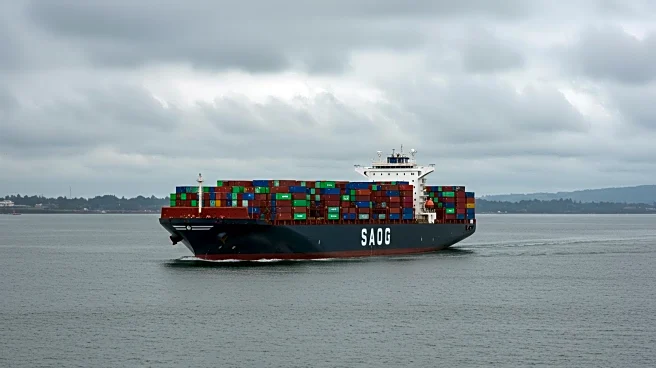What's Happening?
Walmart has reported strong second-quarter results, managing to navigate the impact of tariffs and economic uncertainty effectively. Despite a slight miss on Wall Street's earnings forecast, the retail giant has raised its fiscal 2026 guidance, citing solid core business growth and e-commerce momentum. Walmart's net income for the quarter increased by 56% to $7.03 billion, with a notable rise in e-commerce sales and membership income. The company has been able to mitigate the effects of tariffs by maintaining price leadership and managing costs efficiently. However, Walmart acknowledges that tariff-related costs are gradually increasing, affecting inventory replenishment and customer behavior, particularly among middle- and lower-income households.
Why It's Important?
Walmart's ability to weather the tariff impact and raise its fiscal guidance highlights its strategic resilience in a challenging economic environment. The company's focus on maintaining low prices and enhancing customer experience has allowed it to gain market share, even as tariffs drive up costs. This performance underscores Walmart's role as a key player in the retail sector, capable of influencing market dynamics and consumer behavior. The company's success in navigating these challenges could serve as a model for other retailers facing similar economic pressures, emphasizing the importance of strategic cost management and customer-centric approaches.
What's Next?
Walmart plans to continue monitoring customer demand and managing inventory decisions as it assesses the price elasticity of tariff-impacted items. The company is also investing in its workforce, supply chain automation, and technology to sustain long-term growth. As tariffs continue to influence costs, Walmart will likely adjust its strategies to maintain competitiveness and profitability. The retail giant's performance in the upcoming holiday season will be closely watched as an indicator of its ability to sustain growth amid ongoing economic challenges.












